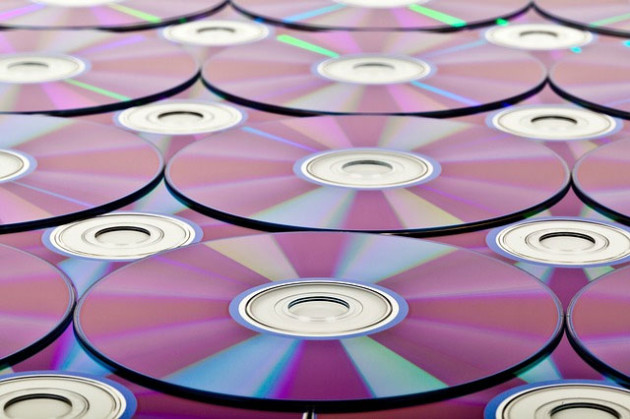According to new research from Northwestern University, Blu-ray discs can be used to improve the performance of solar cells.

According to the group’s findings, which were published in the journal Nature Communications under the title “Repurposing Blu-ray Movie Discs as Quasi-random Nanoimprinting Templates for Photon Management,” the pattern of information written on the increasingly unwanted disc works extremely at improving light absorption across the solar spectrum.
For those curious, it doesn’t matter what movie or show is stored to the disc. It could be Star Wars or Thomas the Train, color or black and white, the improvement in the solar cell’s efficiency is consistent across the board.
“We had a hunch that Blu-ray discs might work for improving solar cells, and, to our delight, we found the existing patterns are already very good,” said Jiaxing Huang, a materials chemist and an associate professor of materials science and engineering in the McCormick School of Engineering and Applied Science. “It's as if electrical engineers and computer scientists developing the Blu-ray technology have been subconsciously doing our jobs, too.”
Blu-ray discs have a higher density of data on them then their DVD or CD counterparts due to the technology’s quasi-random storage pattern. It’s this pattern which, when transferred to the surface of solar cells, provides the right texture to improve the cell’s light absorption and performance.
The obvious question here is why does a solar cell need an added layer of texture in order to work better? Well, the addition of said texture actually helps scatter light across the cell more effectively; this, in turn, increases the cell’s efficiency. Knowing this, researchers have spent the last few years trying to figure out the most effective texture to use with a reasonable amount of manufacturing cost.
The Northwestern team demonstrated that a Blu-ray disc’s strings of binary code 0s and 1s, which are embedded as islands and pits to better store video information, give solar cells a near-optimal surface texture to improve absorption over the broad spectrum of light.
Specifically, the group replicated the Blu-Ray pattern on the active layer of a polymer solar cell and found the cell to be more efficient than a control solar cell with a random pattern on its surface.
“We found a random pattern or texture does work better than no pattern, but a Blu-ray disc pattern is best of all,” Huang said. “Then I wondered, why did it work? If you don't understand why, it's not good science.”
It was a suggestion by Huang’s wife, Shaorong Liu, a database engineer at IBM, that shed some clarity on the “why” behind the science. She said it might have something to do with data compression.
This idea sparked Huang’s curiosity and so he, along with Cheng Sun, an associate professor of mechanical engineering at McCormick who assisted on the project, turned to fellow colleague Donging Guo, an information theory specialist and associate professor of electrical engineering and computer science, to investigate this idea.
During the course of their research, the group noticed the disc’s data processing algorithms served two main purposes:
• Achieving as high a degree of compression as possible by converting the video signals into a seemingly random sequence of 0s and 1s; and
• Increasing error tolerance by adding controlled redundancy into the data sequence, which also limits the number of consecutive 0s and 1s.
To achieve these two purposes, a quasi-random array of islands and pits is necessary, representing 0s and 1s, and varying in size between 150 and 525 nanometers.
As it turns out, this very specific range also works well for light-trapping applications over the entire solar spectrum.
Numerically speaking, the overall broadband absorption enhancement of a solar cell enhanced with a Blu-ray pattern was measured to be 21.8% better.
“In addition to improving polymer solar cells, our simulation suggests the Blu-ray patterns could be broadly applied for light trapping in other kinds of solar cells,” Sun said.
“It has been quite unexpected and truly thrilling to see new science coming out of the intersection of information theory, nanophotonics and materials science,” Huang said.
Via EurekaAlert.org
Advertisement
Learn more about Electronic Products Magazine





